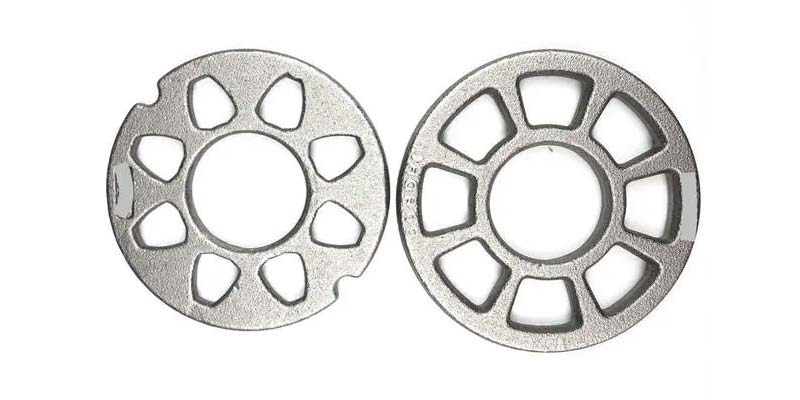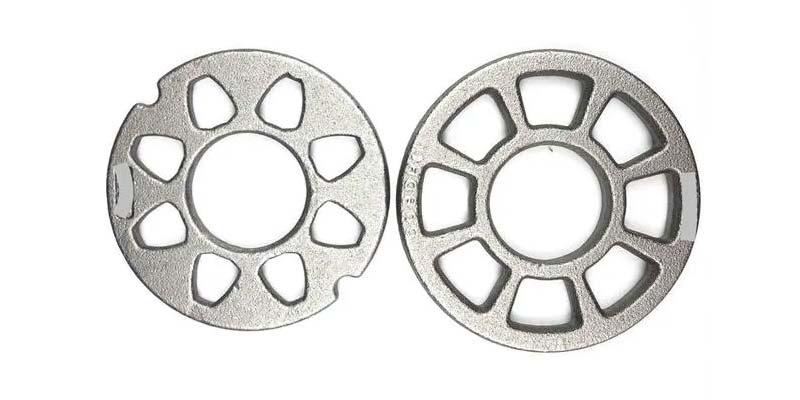- Contact Innally, Let you purchase forgings in China more favorable prices, products more assured!
- Hotline:+(86)15038323776 Email:innally@innally.com
Classification of Marine engineering forgings and their application fields in different industries
- Category: Marine engineering forgings, Steel forgings
- |
- Date: 14/08/2023
the classification and application fields of Marine engineering forgings are diverse and closely related to the construction and operation of ships. Different industries have different requirements for Marine engineering forgings, so the design and selection of forgings need to fully consider its material characteristics, structural shape and practical application environment and other factors to ensure the safety and reliability of the ship
- Carbon steel, stainless steel, alloy steel, etc
Product Details
Marine engineering forgings refer to various forged parts used in the construction and maintenance of ships. They play an important role in ship design and manufacture, not only ensuring the structural strength and safety of ships, but also meeting the specific needs of ships in various industries. This paper will introduce the relevant knowledge of Marine engineering forgings from two aspects of classification and application.
Classification of Marine engineering forgings
Marine engineering forgings can be classified according to material, shape and use.
According to the material classification: according to the materials used in the forgings, Marine engineering forgings can be divided into carbon steel forgings, alloy steel forgings, stainless steel forgings, aluminum alloy forgings, copper alloy forgings, etc.

Carbon steel forgings: suitable for general ship structures, with good strength and weldability.
Alloy steel forgings: made of alloy elements added to steel to improve the strength and corrosion resistance of the material, suitable for the main load bearing parts of ships.
Stainless steel forgings: with excellent corrosion resistance, suitable for Marine components in Marine environments.
Aluminum alloy forgings: with low density and excellent corrosion resistance, suitable for light structures and equipment on ships.
Copper alloy forgings: with good thermal conductivity and corrosion resistance, suitable for electrical equipment and connectors on ships.
Classification according to shape: According to the shape characteristics of forgings, Marine engineering forgings can be divided into shaft forgings, disk forgings, block forgings, ring forgings, etc.
Shaft forgings: mainly includes ship shaft, propulsion wheel shaft, etc., used to transmit power and support ship movement.
Disk forgings: mainly includes gears, flywheels, etc., used to transmit energy and torque related to rotational motion.
Block forgings: such as various types of connection brackets and brackets on ships, which are used to enhance the rigidity of the hull structure.
Ring forgings: such as buffer rings and sealing rings on ships, which are used to withstand axial or circumferential pressures and loads.
Classification by use: Marine engineering forgings can be classified according to their specific fields of application in ship construction and repair.
Main structure forging: such as hull plate, ship frame, etc., used to withstand the strength of the ship’s own weight and external load.
Auxiliary equipment forgings: such as pipes, valves, etc., in the machine room, for the transmission of liquids and gases and for the control of ship systems.
Propulsion system forgings: such as ship propellers, steering engines, etc., used to provide the ship’s propulsion and course control.
Attachment forgings: such as cranes, lifeboats, etc. on ships to provide additional functionality and protection.
2. Application fields of Marine engineering forgings
Marine engineering forgings are widely used in navigation, shipbuilding, Marine development and other related industries. Their applications are mainly concentrated in the following aspects:
Merchant shipping field: Merchant shipping includes cargo ships, oil tankers, container ships, etc. In these ships, a large number of Marine engineering forgings are used in the main structure, propulsion system, auxiliary equipment and other parts to provide sufficient strength and functional support.
Warship field: Warships include frigates, destroyers, aircraft carriers, etc. These highly demanding warships need to use high-strength Marine engineering forgings to meet their special needs in combat and operations.
Fishing boats: Fishing boats are mainly used for fishing and processing, and the application of Marine engineering forgings on fishing boats is mainly focused on the propulsion system, auxiliary equipment and auxiliary devices to improve the efficiency and safety performance of fishing boats.
Research ships: Research ships are mainly used in Marine scientific research, resource exploration and other fields, and the application of Marine engineering forgings on research ships is diversified, involving various special structures and equipment to support the needs of scientific research.
Marine engineering field: Marine engineering includes offshore oil and gas development, submarine pipeline laying, etc. Marine engineering forgings play an important role in Marine engineering, such as submarine pipeline anchors, pontoons, etc., to ensure the stability and reliability of Marine engineering.
In short, the classification and application fields of Marine engineering forgings are diverse and closely related to the construction and operation of ships. Different industries have different requirements for Marine engineering forgings, so the design and selection of forgings need to fully consider its material characteristics, structural shape and practical application environment and other factors to ensure the safety and reliability of the ship.
nannan
INNALLY mainly provides you with various types of cast and forged parts products. Welcome your inquiries! innally@innally.com
Related Products
Search
Forging center
- Steel forgings
- Aluminium alloy forging
- Titanium alloy forging
- Stainless steel forging
- Copper forging
- Automotive forgings
- Locomotive forging
- Bicycle forgings
- Motorcycle forging
- Rigging and fasteners
- Bearing forging
- Electric power fittings
- Marine forging
- Mechanical forgings for metalworking
- Mining machinery forgings
- Marine engineering forgings
- Construction machinery forgings
Popular product

© 2025. All Rights Reserved.







